

Project «Voices of Jewish settlements. Vitebsk region.»פיתוח קשרי התרבות בין העמים של ישראל ובלרוס
|
|---|
Website search |
|
MainNew publicationsContactsSite mapVitebsk regionMogilev regionMinsk regionArkady Shulman
|
Extract from «Travelling with Arkady Shulman»DOES THE PAST HAVE A FUTURE?I have been to many towns and settlements of Belarus, which once used to be Jewish settlements. Being interested in their history I visited the local cemeteries. Some of them have been completely destroyed by tractors, making room for land cultivation. The remnants of the cemeteries looked truly sad: you could see cultivated land and local dumps. Only lonely tombstones, or, rather say their sharp tops are still there looking at people with silent reproach. 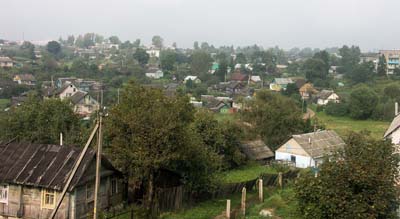 Gorodok.
Gorodok.
In Gorodok, a small regional center in the North of Belarus, I observed a different picture: an old Jewish cemetery, still open, cleared away from bush and trees, more than three hundred stones dug out, the fence tomb inscriptions renovated. The local Jewish community has a rich and fascinating history; however the number of people is decreasing as years go by. There are people who still remember their ancestors. 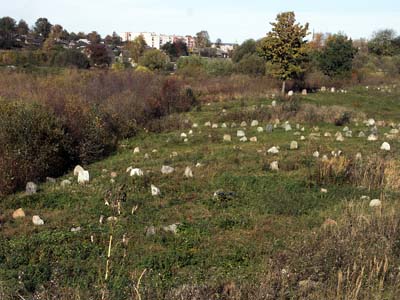 Gorodok. Old Jewish cemetery.
Gorodok. Old Jewish cemetery.
I met them and had a long conversation; they narrated me about their neighbors and friends, who were spread all over the world or found eternal peace (and I hope nobody will disturb again!) at the local cemetery. Then we came to the burial place. The cemetery is located on a hill and from there all of Gorodok can be seen. From one side one can see the Gorozhanka River, from the other – a small lake. A small stream separates the cemetery into two parts: an older and a more modern one. The day was bright and the colors of autumn leaves were playing in the sun, which made the cemetery look extremely picturesque. Mark Iosifovich Krivichkin - not official, but a very active leader of the Jewish community, a doctor with more than 35-year experience, psychiatrist and neurologist, head of central regional hospital, was answering my questions. “The oldest part of the cemetery is more than three hundred years old. I suppose it has existed since Jews settled in Gorodok. Naturally, we do not have any documents about the first burials. It is known that the first part of land was allocated for the Jewish cemetery in 1869. (And apparently this land was annexed to the old cemetery.) Ten years ago there was an impassable forest on the territory of the old part. Nobody had visited it for many years. Once Ziama Gelfand and I went there, out of curiosity, and saw memorials – sharp edged stones covered with moss, partially sticking out from the land. Some of them could be identified only to the touch, hidden under a thick layer of sand or moss. I suggested cleaning away the bush and the trees. Mass Jewish expatriation started in the middle of the 90s. First only a couple of families decided to leave, later more followed. 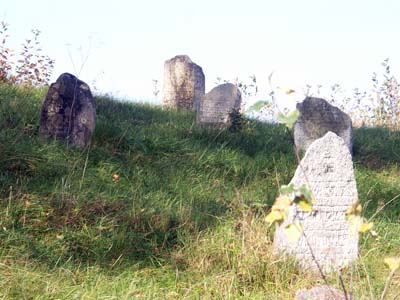 Gorodok. Old Jewish cemetery.
Gorodok. Old Jewish cemetery.
Those, who made a decision to stay, did not want to feel torn away from their kinsmen. Maybe that was the reason for higher attention to the Jewish cemetery in those years – it served as a link between those who left and those who did not. It was a real link: those who were leaving asked the staying to take care of the graves, and the latter accepted the mission. And to a certain extent it was a mystical link: in Jewish tradition a “matseiva” is a specific link connecting the dead with the real world. In Gorodok the Jewish cemetery was always taken care of. In the first years after the war older people observed and remembered Jewish holidays: Usviatsov, Bogatyr, Hazanov, Kozhevnikov and others collected money and put a fence around the cemetery. No people of other religions were allowed to be buried here without their permission. This concerned mixed families. Certainly, they were not capable of giving any official decision, because Gorodok did not have an officially registered Jewish community; and the cemetery belonged to communal services. However, they had a high reputation and when people came to them to ask for permission they said: “If you do not bring a cross we can let you.” “So we decided to restore the cemetery, - goes on Mark Krivichkin. – Work season lasted from April to October. Ziama Gelfand, an experienced builder, was in charge. He worked by himself and hired people as well. Tools included only a winch, crowbars and spades. There were financial expenses, therefore twice a year we collected money from the locals. This money was not enough. People, living abroad also sent money.” In the past tombstones were made of local materials. Krivichkin mentions the workshop was located in Zaluchie, a village not far from Gorodok. The matseivas have raised colorful letters, which was rather rare at that time and they are surrounded with interesting ornaments. Some of them are traditional, like the Cohens’ graves. When I showed cemetery photos to a person who had for many years been connected with museums, he exclaimed: “This is an open air museum”. These days, Jewish cemeteries are often included into sightseeing programs of many towns. I have never heard that the cemetery in Gorodok was called a local attraction or that the state contributed into renovating the cemetery fence. A part of matseivas was broken – it looked as if somebody had hit them with a hammer. Mark explains: “Fascists and Nazi policemen broke them during the war and used the stone for building military and defense constructions. After the war there were people who secretly took the matseivas to build house foundations. We have such a house in Gorodok in Karl Marx Street. By the way, it was built by a school teacher. This is why it is not surprising that in the 90s a group of young people tried to destroy the cemetery. However they were caught and their parents made to repair the tombstones.” We are walking along the graves. All people know each other in a small town, so Mark, who was born and brought up in Gorodok, is familiar with everyone. “Here are Mark Chagall’s relatives. Mendel Elievich - a shipping agent, his wife Haya Yakovlevna. … Here are the Roms. Haya-Beila kept geese, she was short. Her husband, a house painter, was a giant, about 2 meters tall. Here lies their daughter, who worked as a photographer and son, who was a skilled blacksmith. … The Perez family – my wife’s grandparents. … Zinman was a procurer, a modest person. At home he had an oil painting. Once he was visited by a specialist from St. Petersburg who started stammering when he saw it. The painting belonged to the “old Dutch school”, dating from the time of Rembrandt. It is priceless, and he saw it hanging in a Jewish house in a small town. There were people who wanted to buy it, however Zinman refused. … Seil Shush – a very religious person. … Goldwasser Yefim Lazarevich – participant of the Civil War. He gave public speeches at meetings, at schools, telling about how they were fighting against the Soviet enemy. … Aron Yakovlevich Usiavtsov – unofficial leader of the Jewish community after the war. At that time Gorodok had a much larger Jewish population. Fascists executed several thousand people in Berezovka and Vorobiev hills, however almost 400 Jews came back to Gorodok after the war. … Sviridovsky, a house painter, was a plump, kind-hearted man, called “Ichke der roks” (“bull” in Yiddish). … Chestnyh Matvey Semenovich worked as an accountant and served in the Army in Kamchatka. There are no unattended graves at the cemetery, all of these graves are ours, - says Mark Krivichkin. – Even if there are no children or grandchildren to look after them, or if they left or forgotten (even that can happen), we take care of the tombstones, mend and paint them.” The Krivichkins have deep roots in Gorodok. Mark’s grandfather was involved in cobbling roads, it was his profession. He spent half of his life on his knees fitting one stone to another with wooden hammers. Such workers wore special knee pads made of thick tires. Some of the streets in Gorodok still bear evidence to his work. There were three brothers in the family. One of them left for Chicago in the 20’s, where he opened a hat factory. This job was more intellectual and profitable than street cobbling. Before the war the American relatives sent letters and packages but later the connection was lost. 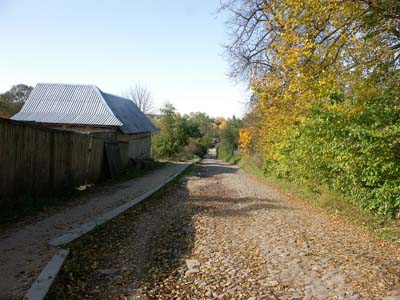 Gorodok. Street cobbled by Krivichkin.
Gorodok. Street cobbled by Krivichkin.
“I do not know where my grandfather was buried, - says Mark. – It is at this cemetery but the exact location has been forgotten. Here also lies my grandmother Hana Krivichkina. She belonged to a tailor family. Her maiden name was Peisahovich. There were a lot of Krivichkins and Peisahovichs in Gorodok.” Craftsmen’s children grew and made their way in life. Joseph Mendelevich Krivichkin graduated from Vitebsk pedagogical institute, came back to Gorodok and established the first evening school there. In 1939 he was sent to the army and fought in the first Finnish campaign. Upon returning home he worked as a teacher. Then the Great Patriotic War broke out and he was immediately mobilized. When the war finished he was already a captain. Later was the war with Japan. He was a hero when he returned to Gorodok – not so many people had three wars on the record of service. Then he worked as a teacher again. Mark was born in 1949. According to the tradition he was circumcised on the eighth day. Only the family and a couple of other people knew about that, but somebody reported that to the authorities and all Joseph’s service for the homeland was forgotten. The country was starting to suffer from Stalin’s anti-Semitic campaigns. Joseph Mendelevich was sent to a village school from Gorodok. His fate could have been worse but villages strongly lacked teachers. Every day it took him two hours to walk to school and he was frequently accompanied by wolves. So he took a tin and attached it to a stick. The tin had holes in it and before leaving Joseph filled it with burning pieces of coal. That scared off the wolves and allowed him to travel safely. He died before retiring. One day he came to class, wrote the date on the blackboard and fell… He was buried at the Jewish cemetery. The family failed to find the grave of his younger brother Abram Mendelevich. He graduated from a military college before the war and was sent to serve at a frontier post in Belostok. That post was the first to be invaded by fascists on June 22nd, 1941… His parents received a letter that their son was declared as missing. Hana Krivichkina did not want to believe that and prayed for him. She searched everywhere, sent inquiries to Moscow, visited the Red Cross. Mark’s mother was a teacher, too. She started working before the war in Aleksandrovo – a village five kilometers from Gorodok. It had a Jewish orphanage. The main language spoken in the orphanage was Yiddish. When the war began she managed to convince the grandfather to move to the east. Grandfather said that during the First World War Germans had treated them well. He did not want to believe the rumors told by Polish refugees and was not willing to move. However mother insisted. On their trip to the east they lost Mark’s elder sister Yelizaveta in a bombing. Fortunately she was found in a couple of days. After that mother began shouting in her sleep. After the war she worked as an elementary school teacher in Gorodok until she retired. Mark is probably the last in the Krivichkin dynasty in Gorodok. His son, after receiving a degree in Israel, is currently working in China. Daughter is studying at a Moscow university and apparently will choose a more perspective life than coming back to the regional center. I did not ask Mark the question which a lot of people can be thinking about. “Why do they contribute so much effort into the old cemetery?” In a couple of decades there will be no Jews left in Gorodok. (Of course, Jewish history is unpredictable, but not to such extent.) Nobody will come to the cemetery and it will go to rack and ruin… There are people for who the notion of duty and memory is much more significant than worldly logic. And when asked a question: “Does the past have a future?” they will answer in the most paradoxical way and most probably will be right. When leaving the cemetery we plucked three bundles of autumn grass and threw them behind the left shoulder. Krivichkin said that his mother had taught him to do that. She had been born in Polesie and that had been a custom among local Jews. Then we approached the Gorozhanka River and washed our hands because his grandparents and great-grandparents used to do that… My Staronevelskaya street…Mark Krivichkin was busy afterwards and Ziama Gelfand accompanied me from the cemetery. He was born in 1932 in Gorodok and remembers the pre-war town really well. However he especially remembers the day when they were first bombed by fascist planes. “We were lying on the bank of the Gorozhanka River, swimming and sunbathing. Adults, of course, were busy doing something else, but we, boys, were 8-9 years old and whatever happened, we were on the river bank on every hot summer day. Suddenly we saw planes. They were flying so low that we could see the pilots’ faces. They were aiming at the bridge across the Gorozhanka. The falling bombs were shining in the sun. They missed the bridge. One woman was killed by the debris. The town was panic-stricken. People began packing; some said it was better to hide in villages. My father was a military man and long before the war he had told my mom: “If the war starts, take the kids and parents, if they agree, and leave at once.” -Tell me about your father, - I ask. -His name was Meir Gelfand. He and my mother met in Gorodok and later left for Harkov, Ukraine. At the beginning of the 30’s Ukraine was suffering from horrible starvation. My father died of starvation. Mother took me, my little sister and came back to her parents. Meir’s younger brother, Naum, was a military man. He married my mother and they had one more child, my brother Misha. So, I consider Naum to be my father. 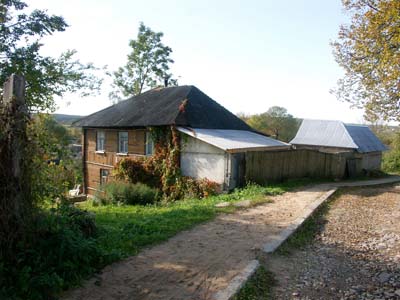 Gorodok.Here was the ghetto.
Gorodok.Here was the ghetto.
According to an ancient Jewish tradition, if an elder brother died, his younger brother was supposed to marry the widow. I am not certain whether the Gelfands and the Shofmans actually adhered to the tradition or just took a liking to each other. Unfortunately the happiness was short. Naum served in different military bases, far away from his home and his wife was waiting for him in her parents’ house. In 1942 the family was informed that Naum Gelfand was announced missing. We need to realize that to be announced missing for a Jew or a communist, who were not captured, meant to be announced dead, with very few exceptions. - Grandfather did not have a horse, - continues Ziama Gelfand. – We walked westwards. Mother Goda, or Olia in Russian, with three children and grandmother Basia. They did not travel really quickly, but numerous relatives helped: some would give them a ride or help carry something. So they made it to Toropets, a town in Kalininskaya (Tverskaya) region. Fascists were bombing roads and railway stations. The refugees were told they would be transported on open platforms. So they were sitting in nearby forests with anti-aircraft gunners. - I remember them shooting down an aircraft, - says Ziama, - and capturing the German pilot. That was the first time I saw a German. The pilot, who landed with the help of a parachute, was even laughing. 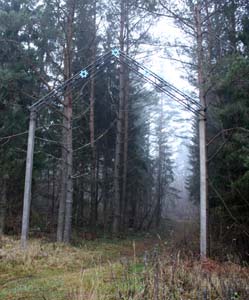 The Vorobiev Hills.
The Vorobiev Hills.
Grandfather fell ill on the way and had to be left in a hospital. After the war we found out that he had died in Kalinin and had been buried there. Grandmother Basia, together with daughter and grandchildren, turned out in Tataria in evacuation. Goda went to work on a collective farm. Basia Shofman was worried about her sons, since she knew nothing about them. The elder son – Isaak Shofman, worked in Gorodok as a teacher. In 1937 he was arrested due to someone’s slander. After spending ten years in camps he returned home in 1947. Later was another arrest. That lasted till the middle of the 50’s, when Stalin’s victims were rehabilitated. Isaak had a strong personality and, despite all the mishaps, began working in Vitebsk as a lawyer. Another son – Arkady Shofman, remained in Tataria. He was interested in history and managed to achieve a lot, got a PhD. And the third brother, David, graduated from Vitebsk Art College and left for Birobijan secretly from his parents. Birobijan was the Jewish Autonomous Region and only when David reached it, he wrote his family a letter. He was in the army during the war, was wounded. He took part in battles in the neighboring Nevel but failed to visit Gorodok. After the war he lived in Khabarovsk, actively participated in art exhibitions. Ziama Gelfand has a small sketch, painted by David Shofman, at home. 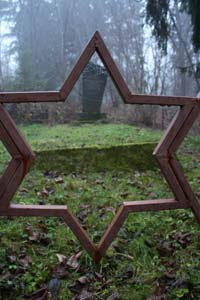 Memorial on the Vorobiev Hills.
Memorial on the Vorobiev Hills.
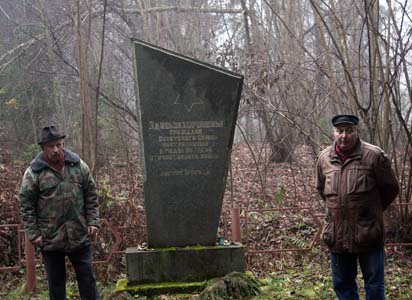 Gelfand and Krivichkin by the memorial in Vorobiev Hills.
Gelfand and Krivichkin by the memorial in Vorobiev Hills.
As soon as the family found out that Gorodok was liberated by the Soviet army, they decided to come back and were in Belarus in 1944. “The central part of Gorodok was destroyed. The street, where we had lived, remained more or less intact, - remembers Ziama Gelfand. – All of grandmother’s relatives, who had stayed on the occupied territories, perished in a ghetto. When we came, people talked that Germans had tortured Jews. I was about twelve at that time but I remember all the stories. In the October of 1941 Germans executed all the people in the ghetto.” We were walking towards Gelfand’s house in Galitskaya Street, previously called Staronevelskaya, and Ziama showed me houses, telling about their former dwellers. “Shubik lived here. There was a small tannery in the yard. Look at the red-brick building, it is still here. He employed men from nearby villages. I met these men and talked to them. They narrated that Shubik paid them every week without delays, he was a punctual person. When the revolution and the Civil War began, he said that the rich would be the ones to suffer.  Memorial in Berezovka.
Memorial in Berezovka.
Shubik’s daughter was baptized before revolution and married a priest. That was a tragedy for the family. I ask: “Was it a Jewish street before the war?” - About 80% of it, - answers Ziama. - Did they speak Yiddish? - Absolutely. Even the Russians and the Byelorussians did. 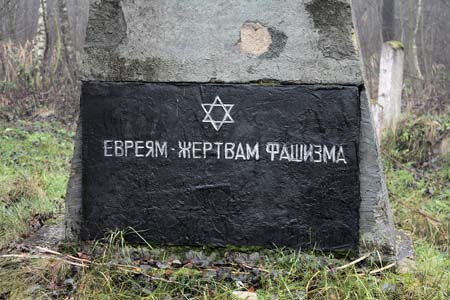 Memorial in Berezovka.
Memorial in Berezovka.
“Haim Voihansky, his wife Marusia and their three children lived in this house. There were different stories after the war. Haim turned out in a partisan brigade, but sometimes he came home at nights. He was murdered by Nazi policemen. They say, his wife “had an affair” with a Nazi policeman in order to save the kids. Her elder children were blond and Marusia claimed they were not Haim’s children and that saved them. The youngest child was his father’s copy and he was killed by fascists. After the war Marusia went insane. Haim’s parents lived in the house opposite ours: his father Shimon-Leibe and mother.” - Where did you live? 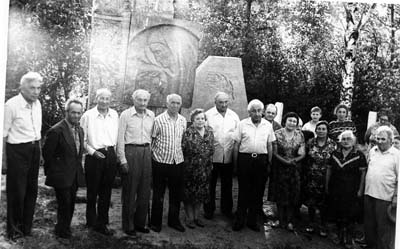 Opening of memorial in Berezovka.
Opening of memorial in Berezovka.
Ziama points the spot: - There was a communal building here. One family was Russian, the rest – Jewish. “A young Jewish man lived in this house. When Nazi policemen came, he refused to give them his valuables. They took him to the end of the street and shot…” After the war Ziama Gelfand became a shoemaker’s apprentice. The shoemaker’s name was Khristoforov. “Khristoforov was a nice man, - remembers Ziama. – He knew how to talk to people.” When Gelfand came back from the army, he went to work on a construction site and soon became a foreman of one of the best brigades in the Soviet Union. Ziama was offered a flat in Gorodok and Vitebsk, but he refused. He collected some money and started building a house of his own in a place not far from his birthplace. The house is neat-looking and spacious with a small lake nearby. Fishing is Ziama Gelfand’s passion. We entered his house. Wife, Lubov Judovna, laid the table and invited us for lunch. We went on talking. His wife spoke this time. My father was also born in Gorodok. His name was Juda Abramovich Lozovsky. However, he, together with my mother Tsylia Boruhovna Perlova, moved to Nevel before the war. These towns have historically had a special link. Men from Gorodok usually married women from Nevel and vice versa. Juda Abramovich used to work on a collective farm. He was involved in horse breeding. When the war broke out, he, together with the head of the farm, took their herd to Vladimir region, a thousand kilometers away. The herd was safe and sound. And after that Juda Lozovsky went to the battlefront… Gorodok, october 2008 г. |
|||
|
|
Jewish settlements in Vitebsk regionVitebsk • Albrehtovo • Babinovichi • Baran • Bayevo • Begoml • Beshenkovichi • Bocheikovo • Bogushevsk • Borkovichi • Braslav • Bychiha • Chashniki • Disna • Dobromysli • Dokshitsy • Druya • Dubrovno • Glubokoye • Gorodok • Kamen • Kohanovo • Kolyshki • Kopys • Krasnopolie • Kublichi • Lepel • Liady • Liozno • Lukoml • Luzhki • Lyntupy • Miory • Obol • Oboltsy • Orsha • Osintorf • Ostrovno • Parafianovo • Plissa • Polotsk • Prozorki • Senno • Sharkovshina • Shumilino • Sirotino • Slaveni• Smolyany • Surazh • Tolochin • Ulla • Verhnedvinsk • Vidzy • Volyntsy • Yanovichi • Yezerishe • Zhary • Ziabki • |
Main |
New publications |
Contacts |
Site map |
Vitebsk region |
Mogilev region |
Minsk region |